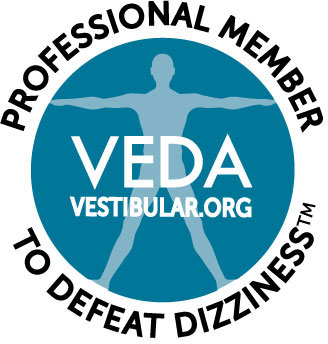Many patients who suffer with vertical heterophoria find themselves extremely anxious in big open spaces with high ceilings. We feel this happens due to the phenomenon of visual vertigo. There is so much visual input coming in, the person feels overwhelmed. The increase of visual stimulus along with movement causes the dizziness to increases. This then leads to even more anxiety. This can also happen when a person with vertical heterophoria tries to cross a busy street. The dizziness can increase leading to an increase in anxiety. Over time, this anxiety can become so intense that the person can not leave their home. These patients become agoraphobic.

Many patients who suffer from vertical heterophoria (VH) find themselves extremely anxious in large, open spaces with high ceilings, such as malls or big box stores. Such places can feel extremely chaotic to people with VH, and even a short trip can be exhausting. The bright fluorescent lights, a dizzying array of products and noise that comes from the combined sounds of carts moving, people talking, children crying and check-out stations beeping can be very overwhelming. The resulting fear and anxiety are known as agoraphobia, which I believe is due to the phenomenon of visual vertigo.
How Visual Vertigo Can Lead to Agoraphobia
Visual vertigo is something that occurs when an overload of visual stimuli triggers dizziness. There is so much visual input coming in that the person feels overwhelmed. When combined with movement, this increased visual stimulation causes the sensation of dizziness to increase, leading to even more anxiety. This feeling is most often experienced by VH patients when they’re driving due to the increased amount of visual stimulation on either side of the car, though it can also be brought on by something as simple as trying to cross a busy street. This cycle of dizziness and anxiety can cause a person to lose their sense of control and perspective. Over time, these feelings become so intense that the person becomes agoraphobic: too fearful and anxious to even leave their home.
The Effects of Vertical Heterophoria
In order for your eyes to “see,” the brain has to be able to take the images you’re seeing and combine them into one clear image. With the binocular vision disorder known as vertical heterophoria, the eyes are moved out of alignment and this process is interrupted, which means the brain is forced to find another way to bring these images into focus. It forces the eye muscles to move the eyes back into the correct position. The consequence of this, however, is that those muscles become sore and strained, resulting in headaches, problems with coordination and balance, neck and shoulder pain, and dizziness and anxiety.
Get Help at the Neuro Visual Center of New York
It would be interesting to study how many agoraphobic people have dizziness as a symptom. At the Neuro Visual Center of New York, we use specialized neurovisual testing to diagnose VH and other binocular vision disorders. For those whose dizziness is caused by vertical heterophoria, eyeglasses with prismatic lenses can help. We invite you to fill out our BVD questionnaire to evaluate if you might have VH or some other type of binocular vision dysfunction. You can also give us a call at (516) 224-4888 to schedule an appointment.





